Ditapis dengan

Genealogy, archive, image :interpreting dynastic history in western India, c.…
The ethnographic approach to Indian history and genealogy; the making of dynastic history in the kingdom of Jhalavad; the history of Gujarat. ‘Genealogy, Archive, Image’ addresses the ways in which history and tradition are ‘reinvented’ through text, memory and painting. It examines the making of dynastic history in the kingdom of Jhalavad, situated in Gujarat, western India, over th…
- Edisi
- -
- ISBN/ISSN
- 9783110539455
- Deskripsi Fisik
- XVI, 278 p.
- Judul Seri
- -
- No. Panggil
- 954.75 JHA, g
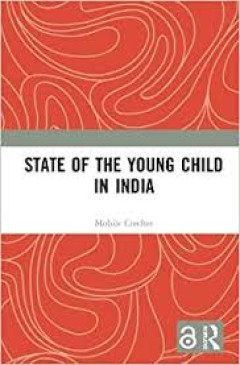
State of the young child in India
This Report is one of the first comprehensive studies on young children in India. It focuses on children under 6 years of age and presents key aspects of their well-being and development. It introduces two young child indices aggregating selected indicators to separately track child outcomes and child circumstances and provides an account of the current situation of the young child in terms of …
- Edisi
- -
- ISBN/ISSN
- 9781003026488
- Deskripsi Fisik
- 332 p.; 22 cm.
- Judul Seri
- -
- No. Panggil
- 305.230954 STA s

Environment in the lives of children and families:perspectives from India and…
Epdf available Open Access under CC-BY licence. Based on involved creative, qualitative work with families in India and the UK who live in different contexts, this book illuminates how environmental practices are negotiated within families, and how they relate to values, identities, and society. It contributes to understanding of the ways in which families and childhood are constructed as sites…
- Edisi
- -
- ISBN/ISSN
- 9781447339236
- Deskripsi Fisik
- 184 p.; 22 cm.
- Judul Seri
- -
- No. Panggil
- 305.23 ENV e
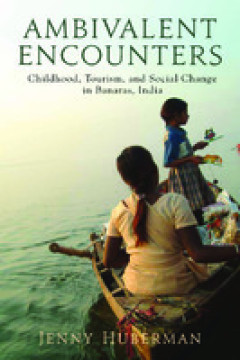
Ambivalent encounters :childhood, tourism, and social change in Banaras, India
Jenny Huberman provides an ethnographic study of encounters between western tourists and the children who work as unlicensed peddlers and guides along the riverfront city of Banaras, India. She examines how and why these children elicit such powerful reactions from western tourists and locals in their community as well as how the children themselves experience their work and render it meaningfu…
- Edisi
- -
- ISBN/ISSN
- 9780813554082
- Deskripsi Fisik
- -
- Judul Seri
- -
- No. Panggil
- 331.318 HUB a

Ambivalent encounters :childhood, tourism, and social change in Banaras, India
Jenny Huberman provides an ethnographic study of encounters between western tourists and the children who work as unlicensed peddlers and guides along the riverfront city of Banaras, India. She examines how and why these children elicit such powerful reactions from western tourists and locals in their community as well as how the children themselves experience their work and render it meaningfu…
- Edisi
- -
- ISBN/ISSN
- 9780813554082
- Deskripsi Fisik
- -
- Judul Seri
- -
- No. Panggil
- 331.318 HUB a
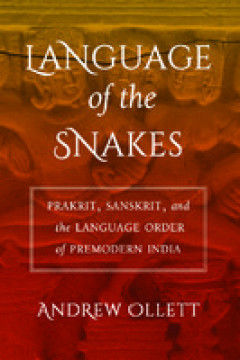
Language of the snakes :prakrit, Sanskrit, and the language order of premoder…
Language of the Snakes traces the history of the Prakrit language as a literary phenomenon, starting from its cultivation in courts of the Deccan in the first centuries of the common era. Although little studied today, Prakrit was an important vector of the kāvya movement and once joined Sanskrit at the apex of classical Indian literary culture. The opposition between Prakrit and Sanskrit was …
- Edisi
- -
- ISBN/ISSN
- 9780520968813
- Deskripsi Fisik
- 324 p.; 22 cm.
- Judul Seri
- -
- No. Panggil
- 891.3 OLL l
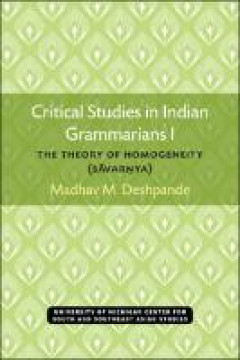
Critical studies in Indian grammarians I :the theory of homogeneity (Savarnya)
In the historical study of the Indian grammarian tradition, a line of demarcation can often be drawn between the conformity of a system with the well-known grammar of Pa?ini and the explanatory effectiveness of that system. One element of Pa?ini’s grammar that scholars have sometimes struggled to bring across this line of demarcation is the theory of homogeneity, or savar?ya, which concerns t…
- Edisi
- -
- ISBN/ISSN
- 9780472901708
- Deskripsi Fisik
- XIII, 224 p.
- Judul Seri
- -
- No. Panggil
- 491.4 DES c

Indian literature and the world :multilingualism, translation, and the public…
Moves beyond restrictive Anglocentric approaches Features contributions from a spectrum of academics, from early career researchers to key names in the fieldAddresses areas such as translation studies as well as postcolonial studies and world literature
- Edisi
- -
- ISBN/ISSN
- 9781137545497
- Deskripsi Fisik
- 288 p.; 23 cm.
- Judul Seri
- -
- No. Panggil
- 891.4
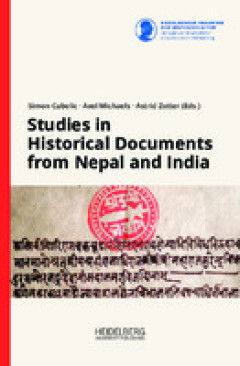
Studies in historical documents from Nepal and India
This volume is the outcome of the conference “Studying Documents in Premodern South Asia and Beyond: Problems and Perspective”, held in October 2015 in Heidelberg. In bringing together experts from different fields—including Indology, Tibetology, History, Anthropology, Religious Studies, and Digital Humanties—it aims at exploring and rethinking issues of diplomatics and typology, the pl…
- Edisi
- -
- ISBN/ISSN
- 9783946054702
- Deskripsi Fisik
- XI, 535 p.
- Judul Seri
- -
- No. Panggil
- 954.96 STU s
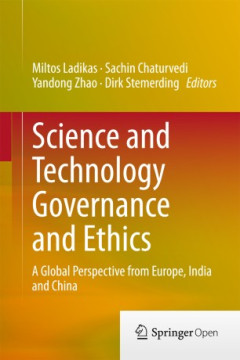
Science and technology governance and ethics :a global perspective from Europ…
This book analyzes the possibilities for effective global governance of science in Europe, India and China. Authors from the three regions join forces to explore how ethical concerns over new technologies can be incorporated into global science and technology policies. The first chapter introduces the topic, offering a global perspective on embedding ethics in science and technology policy. Cha…
- Edisi
- -
- ISBN/ISSN
- 9783319146935
- Deskripsi Fisik
- viii, 173p. : ill.
- Judul Seri
- -
- No. Panggil
- 509 MIL s

Oral democracy :deliberation in Indian village assemblies
Oral Democracy studies citizens' voices in civic and political deliberations in India's gram sabhas (village assemblies), the largest deliberative institution in human history. It analyses nearly three hundred transcripts of gram sabhas, sampled within the framework of a natural experiment, allowing the authors to study how state policy affects the quality of discourse, citizens' discursive per…
- Edisi
- -
- ISBN/ISSN
- 9781139095716
- Deskripsi Fisik
- xi, 215p. : ill.
- Judul Seri
- -
- No. Panggil
- 320.840954 SAN o

Malarial subjects :empire, medicine and nonhumans in British India, 1820-1909
Malaria was considered one of the most widespread disease-causing entities in the nineteenth century. It was associated with a variety of frailties far beyond fevers, ranging from idiocy to impotence. And yet, it was not a self-contained category. The reconsolidation of malaria as a diagnostic category during this period happened within a wider context in which cinchona plants and their most va…
- Edisi
- -
- ISBN/ISSN
- 9781316771617
- Deskripsi Fisik
- xv, 332p. : ill.
- Judul Seri
- -
- No. Panggil
- 616.936200954 ROY m

Revitalizing Indian agriculture and boosting farmer incomes
This open access book provides an evidence-based roadmap for revitalising Indian agriculture while ensuring that the growth process is efficient, inclusive, and sustainable, and results in sustained growth of farmers’ incomes. The book, instead of looking for global best practices and evaluating them to assess the possibility of replicating these domestically, looks inward at the best practic…
- Edisi
- -
- ISBN/ISSN
- 9789811593352
- Deskripsi Fisik
- xxii, 372p. : ill.
- Judul Seri
- -
- No. Panggil
- 338.10954 REV r
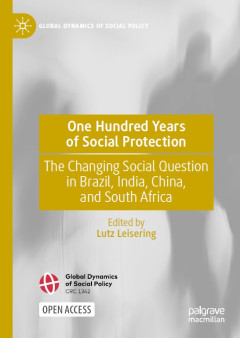
One hundred years of social protection :the changing social question in Brazi…
While the rise of social protection in the global North has been widely researched, we know little about the history of social protection in the global South. This volume investigates the experiences of four middle-income countries - Brazil, India, China and South Africa - from 1920 to 2020, analysing if, when, and how these countries articulated a concern about social issues and social cohesio…
- Edisi
- -
- ISBN/ISSN
- 9783030549596
- Deskripsi Fisik
- xxiv, 437p. : ill.
- Judul Seri
- -
- No. Panggil
- 361.61 ONE o
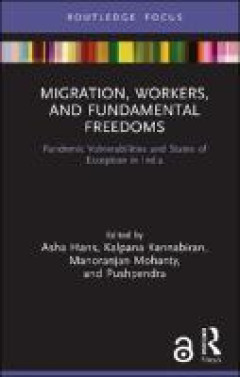
Migration, workers, and fundamental freedoms :pandemic vulnerabilities and st…
The COVID-19 pandemic resulted in a mass exodus of India’s migrant workers from the cities back to the villages. This book explores the social conditions and concerns around health, labour, migration, and gender that were thrown up as a result of this forced migration. The book examines the failings of the public health systems and the state response to address the humanitarian crisis which u…
- Edisi
- -
- ISBN/ISSN
- 9781003145509
- Deskripsi Fisik
- ix, 127 p. : ill.
- Judul Seri
- -
- No. Panggil
- 331.5440954 HAN m

Language and the making of modern India :nationalism and the vernacular in co…
Through an examination of the creation of the first linguistically organized province in India, Odisha, Pritipuspa Mishra explores the ways regional languages came to serve as the most acceptable registers of difference in post-colonial India. She argues that rather than disrupting the rise and spread of all-India nationalism, regional linguistic nationalism enabled and deepened the reach of…
- Edisi
- -
- ISBN/ISSN
- 9781108591263
- Deskripsi Fisik
- 247p. ; ill.
- Judul Seri
- -
- No. Panggil
- 409.54133 PRI l

Balancing the tides :marine practices in American Sāmoa
"Balancing the Tides highlights the influence of marine practices and policies in the unincorporated territory of American Samoa on the local indigenous group, the American fishing industry, international seafood consumption, U.S. environmental programs, as well as global ecological and native concerns. Poblete explains how U.S. federal fishing programs in the post–World War II period encoura…
- Edisi
- -
- ISBN/ISSN
- 9780824879686
- Deskripsi Fisik
- 256p. ; ill.
- Judul Seri
- -
- No. Panggil
- 338.3727099613 JOA b
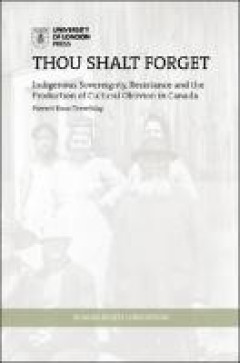
Thou shalt forget :indigenous sovereignty, resistance and the production of c…
The first chapter contains some theoretical reflections on cultural oblivion as well as background information (mostly from documentary sources) about the Essipiunnuat and the Salmon War. Chapter 2 identifies the central elements that have contributed to the occurrence of the Salmon War, according to those taking part. These went beyond their own subjectivity. Th…
- Edisi
- -
- ISBN/ISSN
- 9781912250424
- Deskripsi Fisik
- xiv, 284 : ill.
- Judul Seri
- -
- No. Panggil
- 305.800971 PIE t
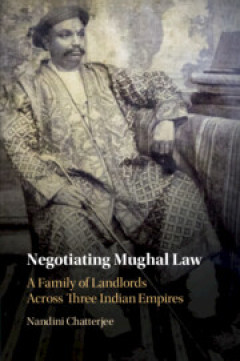
Negotiating Mughal law :a family of landlords across three Indian empires
Based on a completely reconstructed archive of Persian, Hindi and Marathi documents, Nandini Chatterjee provides a unique micro-history of a family of landlords in Malwa, central India, who flourished in the region from at least the sixteenth until the twentieth century. By exploring their daily interactions with imperial elites as well as villagers and marauders, Chatterjee offers a new histor…
- Edisi
- -
- ISBN/ISSN
- 9781108623391
- Deskripsi Fisik
- xii, 233p. ; ill.
- Judul Seri
- -
- No. Panggil
- 349.5430903
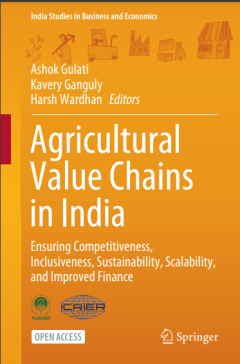
Agricultural Value Chains in India Ensuring Competitiveness, Inclusiveness, …
This open access book provides a clear holistic conceptual framework of CISS-F (competitiveness, inclusiveness, sustainability, scalability and access to finance) to analyse the efficiency of value chains of high value agricultural commodities in India. It is based on the understanding that agriculture is an integrated system that connects farming with logistics, processing and marketing. Farme…
- Edisi
- -
- ISBN/ISSN
- 9789813342682
- Deskripsi Fisik
- XXXV, 298 p ; ill
- Judul Seri
- -
- No. Panggil
- 338.10954 AGR A
 Karya Umum
Karya Umum  Filsafat
Filsafat  Agama
Agama  Ilmu-ilmu Sosial
Ilmu-ilmu Sosial  Bahasa
Bahasa  Ilmu-ilmu Murni
Ilmu-ilmu Murni  Ilmu-ilmu Terapan
Ilmu-ilmu Terapan  Kesenian, Hiburan, dan Olahraga
Kesenian, Hiburan, dan Olahraga  Kesusastraan
Kesusastraan  Geografi dan Sejarah
Geografi dan Sejarah